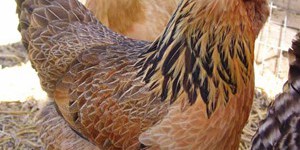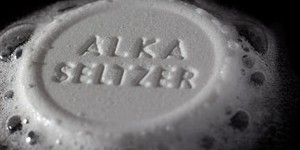Others Like “Protein Fingerprinting” (top 20 results)
|
In order to study individual biochemical compounds like proteins, DNA, or RNA, biochemists need to know how to purify these components from a complex mixture. This is especially important for biotechnology and pharmaceutical industries, which sell purified biochemicals as reagents or drugs to consumers. Do an experiment to purify DNA, RNA, or protein from a complex mixture (for purifying DNA, see the Science Buddies project Extracting Onion DNA). The source of the material can be a cell…
Read more
Some proteins are soluble in aqueous solutions and some are not. Insoluble proteins can be a problem because the proteins can form large aggregates in solution which are difficult to purify, crystallize, and use in experiments. Compare the amino acid sequence and 3-D structures of some soluble and insoluble proteins (Berman, 2000). Is the structure polar or non-polar, and how might this affect solubility? How do detergents make an insoluble protein more soluble? Investigate how this…
Read more
Reclaimed (treated) wastewater can be used for many purposes, including landscape watering and freeing up valuable fresh water for other purposes (like drinking water). It's a great way to conserve water, but is it really safe? This science fair project is designed to find out.
Read more
If you keep chickens (lucky you!), here's an interesting project you might want to try.
Read more
When you take medicine, it needs to dissolve in order to be passed into your bloodstream to have an effect. On the other hand, the drug needs to be packed into a small, dense pill to make it easier to swallow. How does the delivery method of a drug change how quickly it enters the bloodstream? Compare different brands of a drug to find out which brands dissolve the quickest. Does the pH of the stomach (which is usually between 1 and 2) matter? Compare coated to uncoated pills: does the coating…
Read more
Unlocking the three-dimensional structure of a protein is crucial to help scientists understand how it functions in our bodies and how it can cause devastating diseases if it becomes disrupted or interacts in the wrong way. However, figuring out the structure of a protein in three-dimensional space can be very challenging. Proteins are the functional units of our cells, and every protein is made up of a long chain of amino acids. Amino acids come in different shapes and sizes, and they have…
Read more
Animals come in all shapes and sizes, even humans. You can look up different statistics about different kinds of animals using the Internet: average body size, brain size, life expectancy and generation time are some examples. Is there a correlation between body size and life span? Is there a correlation between body size and brain size? Is there a correlation between body size and generation time? Is there a correlation between body size and the size of your footprint? (Comparative Mammalian…
Read more
Some plastics undergo an unusual transition, from a hard, glassy state to a soft, rubbery state, with increased temperature. For this project, you should do background research on the effects of temperature on different types of plastics. Make sure that you understand the difference between thermosetting and thermoplastic polymers. You should also look for information on the glass transition temperature (Tg) for different plastics. Pure polyvinyl acetate has a Tg of 28 C (about…
Read more
Aerodynamics and Hockey: Does the Force of Drag Have an Effect on the Distance the Puck Will Travel?
Think of a way to launch the puck with a reproducible force, and examine the effect of launching the puck in different orientations on the distance it travels. For more information on the physics, see Haché, 2002.
Read more
Try different wind turbine/propeller (chord length, pitch) designs by making models from balsa wood. Connect the spinning axle to a DC motor and measure the voltage produced across a resistor to measure power output. Use fan as wind source. (Judge, 2004)
Read more
|
Explore Our Science Videos
Build a Solar-Powered Car for the Junior Solar Sprint
Make a Thermometer - STEM Activity
Flower Dissection – STEM Activity








